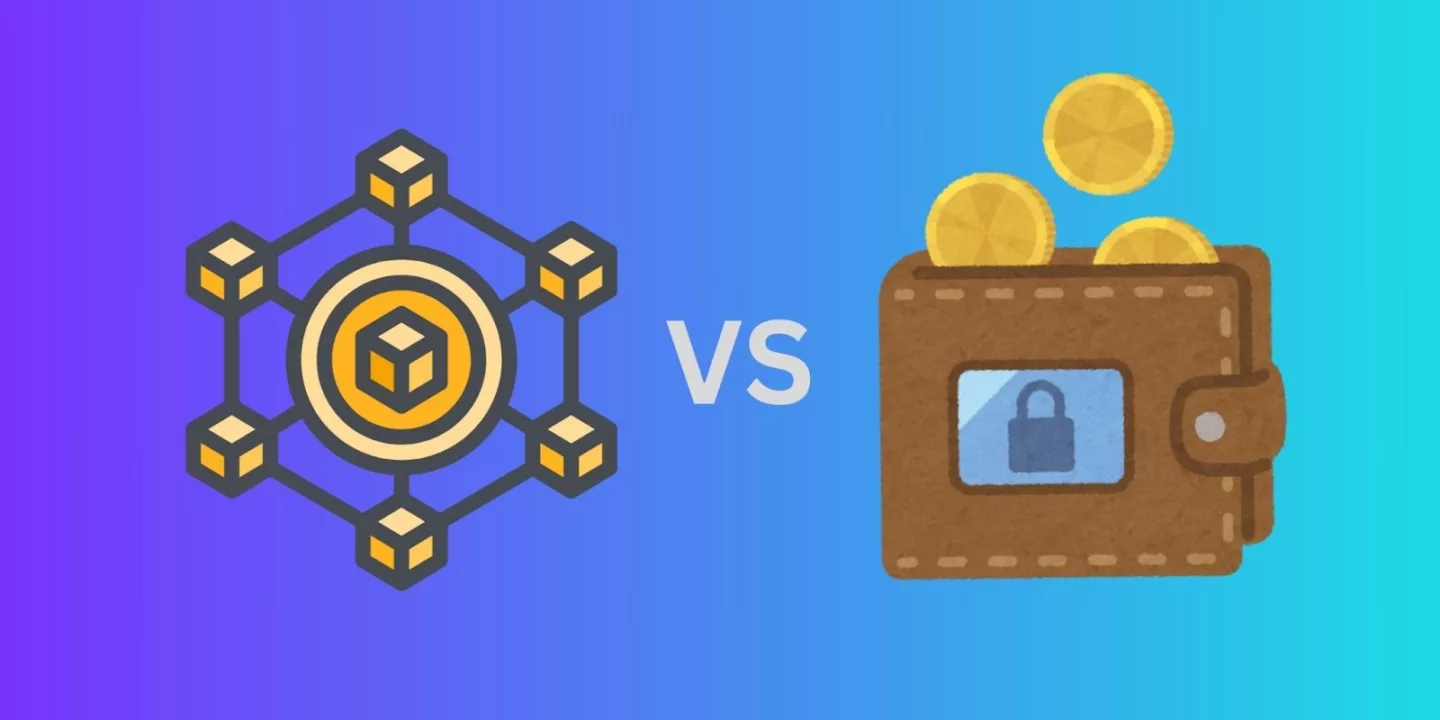
On-Chain vs. Off-Chain Crypto Transactions Explained
When it comes to cryptocurrency transactions, the terms “on-chain” and “off-chain” are key to understanding how different types of transactions work. These innovations are shaping how crypto is traded, bringing more scalability and flexibility to the ecosystem.
Curious to learn more? Let’s dive deeper into how these methods work and which one might suit your needs.
Key Takeaways
- What are on-chain transactions?
- How do off-chain transactions work?
- Which is better: on-chain or off-chain?
What Are On-Chain Crypto Transactions?
Source: ResearchGate
On-chain transactions are those that take place directly on a blockchain. When you make an on-chain transaction, it is recorded on the blockchain’s public ledger. This means that everyone can see the transaction, making it very transparent. Here’s how it works:
- Initiation: When two people want to trade cryptocurrency, they create a transaction.
- Packaging: This transaction is packaged with other transactions into a “block.”
- Validation: The block is sent to the blockchain network, where it is verified by computers called nodes.
- Recording: Once verified, the transaction is added to the blockchain, where it becomes permanent and cannot be changed.
How On-Chain Crypto Transactions Work
On-chain transactions are the backbone of blockchain technology, representing the process of transferring cryptocurrencies directly on the blockchain. This method ensures that every transaction is securely recorded and verified by the network. Here’s a detailed breakdown of how on-chain transactions work:
1. Initiation of the Transaction
When a user wants to send cryptocurrency to another user, they initiate a transaction through their digital wallet. This transaction includes essential details such as:
- The amount of cryptocurrency being sent
- The sender’s wallet address
- The recipient’s wallet address
- A digital signature to verify the sender’s identity
2. Broadcasting the Transaction
Once the transaction is created, it is broadcast to the blockchain network. This means that the transaction information is sent out to all nodes (computers) in the network. Each node maintains a copy of the blockchain and participates in the validation process.
3. Validation and Consensus
After broadcasting, the transaction enters a pool of unconfirmed transactions, often referred to as the “mempool.” Here, nodes verify the transaction using consensus mechanisms. The two most common methods are:
- Proof of Work (PoW): Used by Bitcoin, this method requires miners to solve complex mathematical puzzles. The first miner to solve the puzzle gets to add the new block of transactions to the blockchain and is rewarded with cryptocurrency. This process ensures that the transaction is legitimate and prevents double-spending.
- Proof of Stake (PoS): Used by newer cryptocurrencies like Ethereum (after its upgrade), PoS allows validators to create new blocks based on the amount of cryptocurrency they hold and are willing to “stake” as collateral. This method is generally more energy-efficient than PoW.
4. Inclusion in a Block
Once validated, the transaction is packaged with other transactions into a block. Each block contains a set of transactions, a reference to the previous block, and a unique cryptographic hash. This linking of blocks creates a secure and immutable chain.
5. Confirmation and Finalization
The newly created block is then added to the blockchain. This process is called “confirmation.” The transaction is now permanent and cannot be altered. The number of confirmations a transaction receives can affect its perceived security; generally, the more confirmations, the more secure the transaction is considered.
Examples of On-Chain Crypto Transaction
A well-known example of an on-chain transaction is Bitcoin (BTC). Bitcoin uses a Proof of Work (PoW) system to validate transactions. In this system, miners (people with powerful computers) compete to solve complex puzzles. The first miner to solve the puzzle gets to add the new block of transactions to the blockchain and is rewarded with new bitcoins.
READ ALSO: Bitcoin Whitepaper Simplified: Decoding Key Insights
Another example is Ethereum, which has recently moved to a Proof of Stake (PoS) system. In PoS, validators are chosen based on how much cryptocurrency they hold and are willing to “stake” as collateral, making the process more energy-efficient than PoW.
The Pros and Cons: On-Chain Crypto Transactions
Pros
- Security: On-chain transactions are very secure. Once a transaction is recorded on the blockchain, it cannot be altered or deleted. This makes it hard for anyone to commit fraud.
- Transparency: Because all transactions are publicly recorded, anyone can check the details. This transparency builds trust among users.
- Decentralization: There is no central authority (like a bank) controlling the blockchain. This means that no single entity can manipulate or control the data.
Cons
- Slow Processing Times: On-chain transactions can take time to process, especially during busy periods. For example, if many people are trying to make transactions at once, it can slow down the network.
- High Fees: When the network is congested, transaction fees can increase significantly. This makes it expensive to send small amounts of cryptocurrency.
- Energy Consumption: The mining process used in PoW requires a lot of energy, which raises environmental concerns.
What Are Off-Chain Crypto Transactions?
Source: ResearchGate
Off-chain transactions occur outside the main blockchain. These transactions do not get recorded on the blockchain immediately, which allows for faster and cheaper transfers. Here’s how off-chain transactions work:
- Agreement: Two parties agree to conduct a transaction without immediately recording it on the blockchain.
- Validation: The transaction can be validated by a third party or through other methods that don’t require blockchain confirmation.
- Settlement: Later, the transaction can be recorded on the blockchain if needed.
How Off-Chain Crypto Transactions Work
There are several ways to conduct off-chain transactions:
- Third-Party Validators: Similar to traditional payment systems, a trusted intermediary (like PayPal) can facilitate the transaction.
- Layer 2 Solutions: Technologies like the Lightning Network for Bitcoin allow transactions to happen off the main blockchain and later settle back onto it. This helps reduce congestion and fees.
Pros and Cons of Off-Chain Crypto Transactions
Pros
- Faster Transaction Speeds: Off-chain transactions can be processed almost instantly since they don’t have to wait for blockchain confirmations.
- Lower Costs: These transactions typically have little to no fees because they bypass the costs associated with on-chain processing.
- Greater Privacy: Off-chain transactions are not publicly recorded, which means users can maintain more privacy.
Cons
- Less Transparency: Since off-chain transactions are not recorded on the blockchain immediately, they may lack the same level of public scrutiny, which can lead to disputes.
- Dependence on Trust: Users must trust the third parties involved in the transaction, which can introduce risks if the third party is not reliable.
- Potential Security Issues: Off-chain transactions may be more vulnerable to fraud since they do not benefit from the same security features as on-chain transactions.
On-Chain vs. Off-Chain Crypto Transactions: Which Is Best?
Choosing between on-chain and off-chain transactions depends on what you need. Here’s a quick comparison:
- On-Chain Transactions: These are best for high-value transfers or situations where security and transparency are crucial. They provide a high level of trust because they are recorded on a public ledger.
- Off-Chain Transactions: These are ideal for everyday transactions, especially when speed and cost are more important than transparency. They are great for small payments or situations where privacy is a priority.
Conclusion
Both on-chain and off-chain transactions have their advantages and disadvantages. On-chain transactions offer security and transparency, while off-chain transactions provide speed and lower costs. By understanding the differences between these two methods, you can make informed decisions about how to conduct your cryptocurrency transactions. Whether you prioritize security or efficiency, knowing when to use each method will help you navigate the crypto landscape more effectively.
Platforms like Mudrex are at the forefront of the crypto trading industry, offering a comprehensive suite of tools and features for both on-chain and off-chain transactions. With its recent expansion to include over 300 new cryptocurrencies, Mudrex is making it easier than ever for investors to diversify their portfolios and capitalize on the growth opportunities in the crypto market.
FAQs
- What is the difference between off-chain and on-chain transactions?
On-chain transactions are recorded directly on the blockchain, offering greater security and transparency, but can be slower and more costly. Off-chain transactions happen outside the blockchain, allowing faster and cheaper transfers, though they rely on trust between parties or third-party systems.
- What does “on-chain” mean in crypto?
“On-chain” refers to any transaction or activity that is processed and recorded on the blockchain itself. This makes it permanent, transparent, and verifiable by the network.
- What is an example of off-chain crypto?
An example of off-chain crypto is a transaction made using the Bitcoin Lightning Network. This technology allows users to transfer Bitcoin without recording each transaction on the main blockchain, making it faster and cheaper.
- What are the two types of transactions in blockchain?
The two main types of blockchain transactions are on-chain and off-chain. On-chain transactions are verified and recorded on the blockchain, while off-chain transactions occur outside the blockchain, often through third-party systems or layer-2 solutions.





